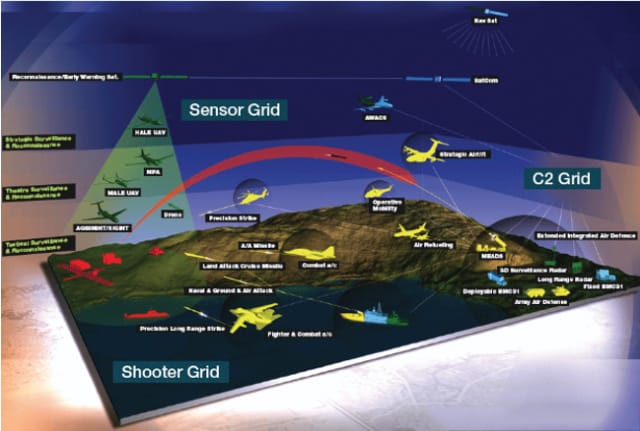Introduction:
In the ever-evolving landscape of conflict, traditional warfare has given way to more nuanced and covert strategies. Among them, 5th generation warfare stands out as a paradigm shift in the methods of engagement. As the world becomes increasingly interconnected and technology-driven, understanding the intricacies of 5th gen warfare is crucial for policymakers, military strategists, and civilians alike. This article delves into the concept of 5th generation warfare, its tactics, and the far-reaching implications it holds for modern society.
In the ever-changing landscape of warfare, a new era has emerged - the era of 5th generation warfare. This paradigm shift in military strategy and tactics has revolutionized the way conflicts are fought and won. Let's delve into the intricacies of this new form of warfare and understand its implications.
Defining 5th Generation Warfare:
5th generation warfare encompasses a range of non-traditional tactics and strategies that go beyond conventional military operations. It leverages technology, information, and psychological warfare to gain an advantage over adversaries. It is characterized by asymmetry, adaptability, and the blurring of boundaries between the physical and virtual realms.

Information Warfare:
At the heart of 5th generation warfare lies information warfare. The ability to control and manipulate information has become a powerful weapon. Disinformation campaigns, cyberattacks, and influence operations are used to shape public opinion, sow discord, and destabilize nations. The battle for hearts and minds has shifted to the digital realm.
Hybrid Warfare:
5th generation warfare blurs the lines between conventional and unconventional methods. Hybrid warfare combines conventional military forces with irregular tactics, such as proxy wars, insurgency, and terrorism. This approach allows for flexibility and deniability, making it difficult for traditional military forces to counter.
Cyber Warfare:
The digital domain has become a new battleground in 5th generation warfare. Cyber warfare involves the use of computer networks to disrupt or destroy an adversary's infrastructure, steal sensitive information, or launch coordinated attacks. It poses significant threats to governments, businesses, and individuals alike, requiring constant vigilance and advanced cybersecurity measures.
Psychological Operations:
Psychological operations play a crucial role in 5th generation warfare. The manipulation of perceptions, emotions, and beliefs can shape the outcome of conflicts. Propaganda, social media manipulation, and influence campaigns are used to sway public opinion, demoralize adversaries, and gain support for one's cause.
Unconventional Tactics:
5th generation warfare relies on unconventional tactics that exploit vulnerabilities in modern society. These include economic warfare, disruption of critical infrastructure, and the use of non-state actors to achieve strategic objectives. The focus is on achieving maximum impact with minimal resources.
Adaptability and Resilience:
5th generation warfare demands adaptability and resilience. One of the defining features of fifth-generation warfare is its adaptability. Adversaries leverage agility and innovation to rapidly adjust tactics and techniques in response to changing circumstances. Whether through exploiting vulnerabilities in digital infrastructure or manipulating public opinion through disinformation campaigns, adaptability is key to maintaining the upper hand.
Flexibility in Strategy:
Flexibility in strategy is paramount in fifth-generation warfare. Adversaries blur the lines between offense and defense, employing hybrid tactics that combine conventional military operations with irregular warfare and cyberattacks. This flexibility allows them to exploit weaknesses in their adversaries' defenses while mitigating their own vulnerabilities.
Network-Centric Operations:
Network-centric operations are central to fifth-generation warfare, enabling adversaries to coordinate distributed activities across multiple fronts. By leveraging interconnected networks of actors, both state and non-state actors can amplify their impact and rapidly disseminate propaganda, misinformation, and disruptive activities.
Information Warfare:
Information warfare lies at the heart of fifth-generation conflict, where perception often shapes reality. Adversaries engage in narrative warfare, manipulating public opinion through targeted messaging and psychological operations. Social media platforms serve as battlegrounds, where information is weaponized to sow discord and undermine trust in democratic institutions.
Resilience in Fifth-Generation Warfare:
Resilience is a cornerstone of fifth-generation warfare, as adversaries seek to exploit vulnerabilities and disrupt adversaries' systems while simultaneously fortifying their own defenses.
This resilience manifests in various forms, from robust cyber defenses and redundant communication networks to decentralized command structures and adaptive decision-making processes.

Hybrid Threats:
Hybrid threats pose a significant challenge in fifth-generation warfare, blurring the lines between state and non-state actors, conventional and irregular warfare, and physical and virtual domains. Adversaries leverage asymmetrical advantages to achieve strategic objectives while minimizing attribution and accountability.
Conclusion:
In conclusion, the adaptability and resilience of fifth-generation warfare pose significant challenges for modern conflict. Adversaries exploit technological advancements and societal vulnerabilities to wage asymmetric campaigns across multiple domains, requiring adaptive responses and innovative strategies. Understanding the dynamics of fifth-generation warfare is crucial for safeguarding national security and maintaining strategic advantage in an increasingly complex and interconnected world In conclusion, fifth-generation warfare represents a dynamic and evolving paradigm that challenges traditional notions of conflict. Its adaptability and resilience stem from the fusion of technological innovation, social manipulation, and asymmetric tactics. As we navigate the complexities of modern warfare, understanding and countering the strategies of fifth-generation warfare is paramount. Success requires a comprehensive approach that combines robust defenses, agile responses, and proactive engagement across multiple domains. By embracing innovation, fostering resilience, and adapting to the changing nature of conflict, nations can effectively confront the challenges posed by fifth-generation warfare and safeguard their security in an ever-changing world..


You must be logged in to post a comment.